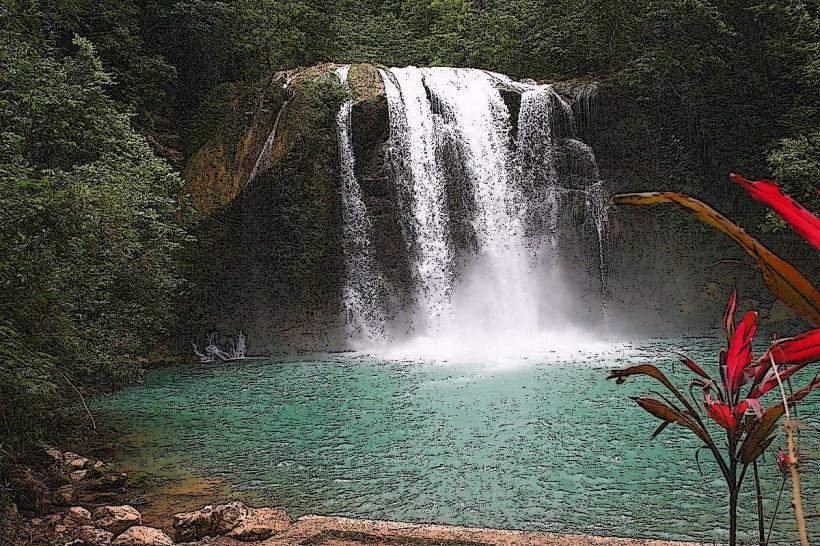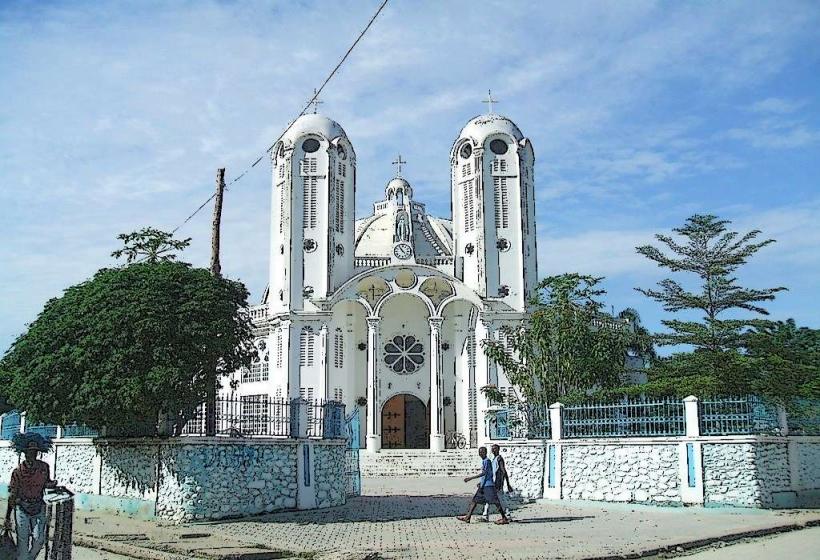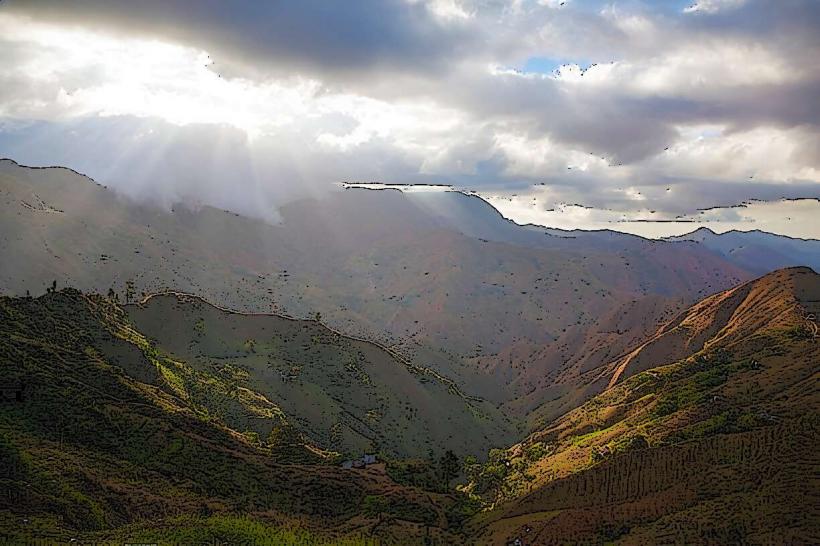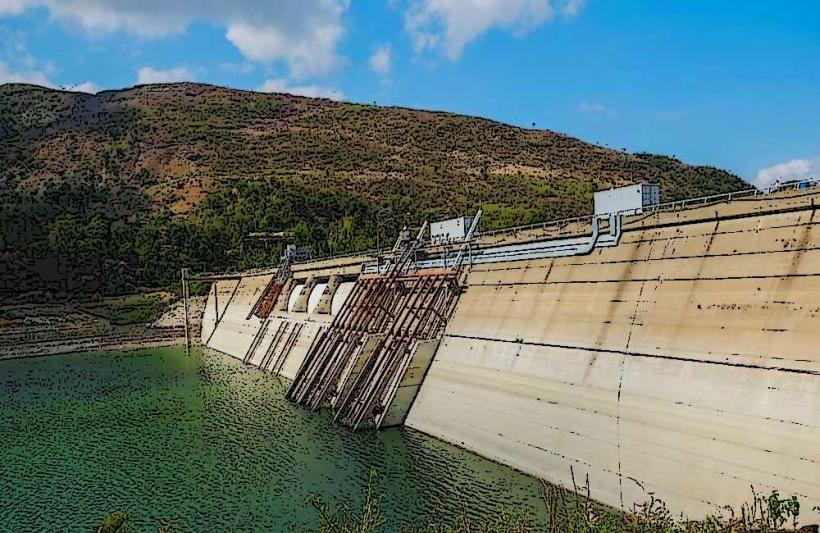Information
Landmark: Gros-MorneCity: Hinche
Country: Haiti
Continent: North America
Gros-Morne is a commune located in the Artibonite Department of Haiti, situated in the central region of the country. It is known for its beautiful natural surroundings, agricultural production, and historical significance.
Geographic Location
Location: Gros-Morne is positioned in the central part of Haiti, approximately 55 kilometers (about 34 miles) northeast of the capital city, Port-au-Prince. It is strategically located between the towns of Saint-Marc and Gonaïves, making it a key point in the central plateau region. The commune is surrounded by hills and valleys, offering a picturesque and peaceful environment.
Elevation: Gros-Morne is situated in a mountainous region, with an elevation that provides scenic views of the surrounding landscape, including the nearby Péligre Lake. Its elevated position gives it a cool climate, which is distinct from the more tropical lowlands of Haiti.
History and Significance
Historical Roots: Gros-Morne has a rich historical background, especially in relation to Haiti’s revolutionary past. During the Haitian Revolution (1791-1804), the central region of Haiti, including the area around Gros-Morne, played a pivotal role in the struggle for independence from French colonial rule. The region was one of many places that witnessed battles between Haitian revolutionaries and French colonial forces.
Post-Independence Development: After Haiti gained independence in 1804, Gros-Morne, like many other rural areas, was primarily known for agriculture. Over the years, it has developed into a key agricultural hub, with a focus on producing crops like coffee, rice, corn, and bananas.
Economy and Agriculture
Agriculture: The primary economic activity in Gros-Morne is agriculture, with the fertile lands surrounding the commune being well-suited for growing a variety of crops. The region is known for its production of coffee, which has long been a staple of Haiti’s agricultural economy. Other important crops include rice, plantains, corn, beans, and cassava. The fertile soil, combined with the area’s moderate climate, makes it a productive agricultural zone.
Fishing and Livelihoods: Gros-Morne’s proximity to Péligre Lake provides opportunities for fishing and other water-related activities, contributing to the livelihood of local residents. Fishing is an important activity in the area, supporting both the local economy and food supply.
Market and Trade: The commune serves as a local trade hub where agricultural goods are exchanged, sold, and transported to other regions of Haiti. Local markets in Gros-Morne offer a variety of fresh produce, crafts, and goods, which are essential to the daily life of its inhabitants.
Cultural and Social Life
Community and Family: Like much of rural Haiti, Gros-Morne has a strong sense of community, with family ties and social cohesion being important aspects of daily life. Festivals and celebrations, often centered around religious events, form a significant part of the cultural life in the commune. These festivals include traditional Haitian music, dance, and food, offering visitors and locals an opportunity to celebrate the country’s rich cultural heritage.
Religious Influence: Catholicism is the dominant religion in Gros-Morne, and the commune is home to several churches, with Gros-Morne Church being a central place of worship. Like many Haitian communities, Gros-Morne also has a significant presence of Vodou practices, which coexist alongside Catholicism, reflecting the syncretic nature of Haitian religious life.
Local Arts and Crafts: Gros-Morne, like other rural Haitian communities, is known for its vibrant arts and crafts, particularly traditional Haitian painting, handmade textiles, and wooden sculptures. These crafts are often sold in local markets and serve as both a cultural expression and an economic activity for local artisans.
Natural Beauty and Tourism
Scenic Landscape: Gros-Morne is located in a region of Haiti known for its mountainous terrain and lush landscapes. The surrounding mountains, forests, and rivers offer scenic beauty, making the area an attractive location for nature lovers and travelers seeking tranquility away from more urban centers.
Péligre Lake: The nearby Péligre Lake, a man-made reservoir created by the Péligre Dam, is a significant water body that offers opportunities for fishing, boating, and sightseeing. The lake and surrounding areas also have ecological importance, hosting a range of local flora and fauna.
Outdoor Activities: Visitors to Gros-Morne can enjoy activities such as hiking, bird watching, and exploring local forests and rivers. The region’s high elevation provides a cool climate, which contrasts with the tropical heat of other areas in Haiti, making it a refreshing destination for eco-tourism.
Education and Infrastructure
Education: Gros-Morne is home to several schools, ranging from elementary to secondary levels, where children receive an education. However, like many rural parts of Haiti, the education system faces challenges, including limited resources, lack of infrastructure, and sometimes inadequate facilities. Non-governmental organizations (NGOs) and local efforts are often involved in supporting education and improving schools in the region.
Infrastructure: The infrastructure in Gros-Morne is relatively underdeveloped compared to urban centers in Haiti. Roads can be rough, especially in rural areas, which can make transportation difficult, particularly during the rainy season. Access to electricity and clean water remains limited in some parts of the commune, and healthcare services are often concentrated in the larger towns like Hinche.
Challenges and Opportunities
Environmental Challenges: Deforestation and soil erosion have been issues in the central plateau region, including Gros-Morne. The population relies heavily on the land for agriculture, and unsustainable farming practices can lead to environmental degradation. Reforestation and sustainable agricultural practices are important areas of focus for preserving the natural environment.
Economic Development: While agriculture remains the backbone of the economy, there are opportunities for economic growth through eco-tourism, craft production, and the development of local industries. With its natural beauty and agricultural base, Gros-Morne has the potential to diversify its economy, though development is often hindered by limited infrastructure and investment.
Conclusion
Gros-Morne is a charming and historically rich commune in Haiti, known for its agricultural significance, natural beauty, and strong sense of community. It plays an essential role in the Artibonite Department, contributing to Haiti’s economy through its agricultural output, including coffee, rice, and other crops. Despite facing challenges such as limited infrastructure and environmental issues, Gros-Morne continues to be an important center of life in central Haiti, offering a blend of cultural, religious, and natural attractions for both locals and visitors. Its peaceful, mountainous landscapes and vibrant community make it a unique and valuable part of Haiti’s diverse regions.





